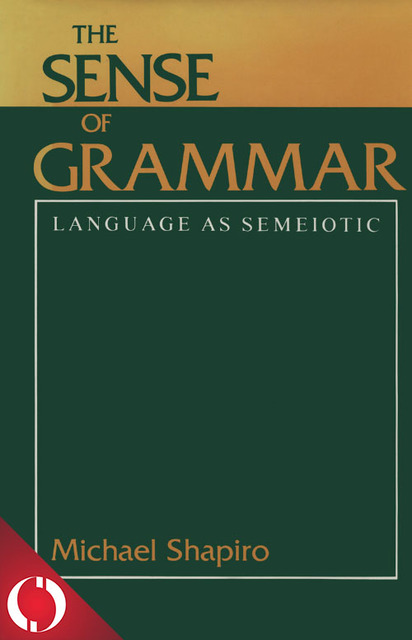The Sense of Grammar
Language as Semiotic
With The Sense of Grammar
, Peircean studies take a giant step forward, moving from a preoccupation with textual exegesis into the battleground of linguistic analysis. Working along the lines suggested by Peirce's theory of signs, as interpreted within the context of the philosopher's entire oeuvre, Michael Shapiro proposes a major reorientation of linguistic theory and a shift in the ultimate goals of the study of language structure.
Part One provides a theoretical dissection of Peirce's semeiotic and evaluates its importance to structural linguistics. In it Shapiro grapples with the main differences between the theory of signs as Peirce held it before and after 1906. He then applies Peirce's semeiotic to the development of a new theory of grammar, which he tests in Part Two. Drawing examples primarily from the Russian language, Shapiro demonstrates how Peircean semeiotics engages the actual problems of linguistic structure subtended by real data and resolves them in the areas of phonology, morphophonemics, and morphology and semantics.

Table of Contents
Metadata
- isbn978-0-253-05417-3
- publisherIndiana University Press
- publisher placeBloomington, Indiana USA
- restrictionsCC-BY-NC-ND
- rightsCopyright © Trustees of Indiana University
- rights holderIndiana University Press
- rights territoryWorld
- doi
We use cookies to analyze our traffic. Please decide if you are willing to accept cookies from our website. You can change this setting anytime in Privacy Settings.


